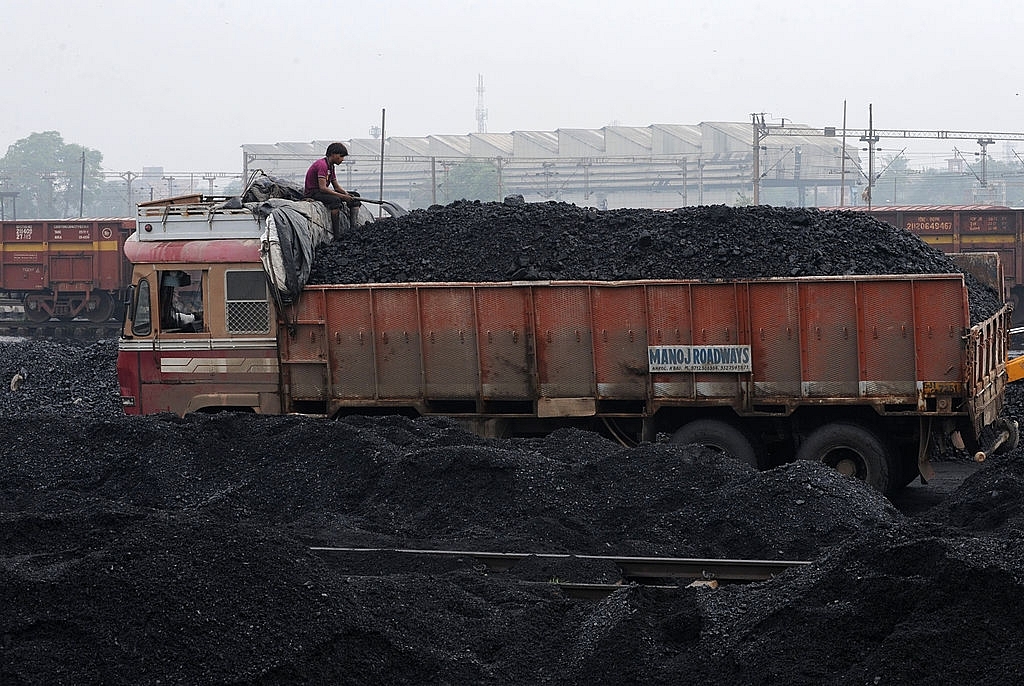Economy
Why Coal Demand Has Spiralled Since August, And What The Government Is Doing About It
- To understand why coal demand has increased since August, power generation data from nuclear, wind and hydro sources must also be looked at

Coal India (SAM PANTHAKY/AFP/GettyImages)
The sudden spiralling coal demand in the country since August this year on the back of poor monsoon and reduced hydel generation saw power prices peak to Rs 10.8 per unit on the power exchange on 16 October.
Again on 17 October, even though for just half an hour, power prices shot up to Rs 10.8 a unit.
Reversing this temporary increase, power price on India Energy Exchange (IEX) on 17 October 2017 was Rs 5.45 per unit on an average for the day, and on 18 October 2017 dropped to an average of Rs 4.33 per unit.
Even though temporary, meetings between the Minister of State (IC) for Power, R K Singh and Minister of Railways and Coal, Piyush Goyal, were held, where the two ministers jointly reviewed the status on Wednesday, 18 October and also spoke to concerned states for an enhanced supply of coal.
“A detailed plan has been agreed on, which would be implemented from today (18 October) and would ensure sufficient supply of coal to power plants,” a senior ministry official said after the meeting.
He added that the supply to states like Maharashtra has improved and efforts will be made to improve the coal stock in all the power stations with low inventories.
“It was also agreed that issues with some DVC power plants which are affected due to the closure of Dhanbad–Chandrapura railway line would be resolved expeditiously,” said a senior official.
But what led to this sudden spike in coal demand of power stations?
The answer to this is the corresponding reduction in the country’s nuclear, wind and hydro generation.
“In August and September, there has been reduced power generation from nuclear, wind and hydro by 2,000 MW, 1,000 MW and 1,000 MW respectively,” a senior ministry official told Swarajya.
The nuclear generation was (-) 35 per cent in August 2017 over August 2016, (-) 14 per cent in September 2017 over September last year and hydro generation was (-) 12 per cent in August 2017 over August 2016, (-) 0.1 per cent in September 2017 over September 2016.
Besides, imported power from Bhutan was also reduced.
It is this reduced generation from other sources that led to an increase in the coal demand by about 20 MT per annum.
As the demand for coal from power sector increased, the coal supply to the power sector also increased which reflects the growth of 14.4 per cent in coal supply to the power sector in August 2017 compared to August 2016.
Similarly, the coal supply to power sector was 22 per cent more in September 2017 as compared to September 2016.
In October 2017 (until 10 October), the supply has been 21.37 per cent more as compared to the same period in October 2016.
It also needs to be noted that the volume of power being traded in the market is to the tune of about 150 Million Units (MU) per day against the total generation of around 3750 MU per day (which is roughly 4 per cent).
Discoms are largely meeting their demand through long-term or medium-term contracts, and the impact of the current spike in the exchange price is marginal.
India’s total installed generation capacity is around 330GW, out of which the coal-based power stations in the country contribute 193GW, which is sufficient to meet the maximum demand of 163GW occurred during the current year.
At present, the maximum demand during 17 October is around 160 GW which is around 10 GW higher than the same period last year.
The overall growth in the generation has been around six per cent, and the growth of generation from coal-based stations was 17 per cent in August 2017 in comparison to the same period last year. Coal-based generation continues to see a rise in September and October 2017.
Introducing ElectionsHQ + 50 Ground Reports Project
The 2024 elections might seem easy to guess, but there are some important questions that shouldn't be missed.
Do freebies still sway voters? Do people prioritise infrastructure when voting? How will Punjab vote?
The answers to these questions provide great insights into where we, as a country, are headed in the years to come.
Swarajya is starting a project with an aim to do 50 solid ground stories and a smart commentary service on WhatsApp, a one-of-a-kind. We'd love your support during this election season.
Click below to contribute.
Latest